There are many exciting new technologies that will continue to transform and improve our day-to-day lives. At Haseltine Lake, we've done some research into some of our most interesting, which include recent patent applications we have seen as examples.
Drone delivery
Drone delivery services are hailed the future of e-commerce fulfilment. Many major retail and logistics companies around the world are testing drone delivery services, including the biggest e-commerce retailer, Amazon, which ambitiously aims to autonomously fly individual packages to customers, within 30 minutes of ordering.
Amazon has filed patent applications for various drone prototypes, e.g. US 2016/0229530 A1, and claimed a first successful drone delivery service in December 2016.
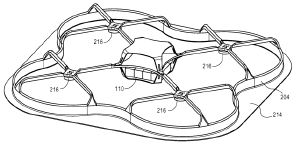
Figure 1: View of a drone configuration, according to US 2016/0229530 A1
To qualify for 30 minute delivery, the order must be small enough to fit in the cargo box that the drone craft will carry, and must have a delivery location within a 10 mile radius of a participating Amazon order fulfilment centre. Amazon's plans for such fulfilment centres are multi-level towers to allow for drones to pick up packages from all floors of the building, which would significantly increase delivery efficiency (US 2017/0175413 A1). In contrast to classic warehouses, these towers can be situated within major cities, as opposed to on their outskirts, and can stack delivery hubs on top of each other instead of single-story warehouses.
Other plans involve moving warehouses, using traditional freight trains with drone hubs that ride atop the trains (US 9718564 B1), or flying bases hanging from zeppelin-style airships (US 9305280 B1).
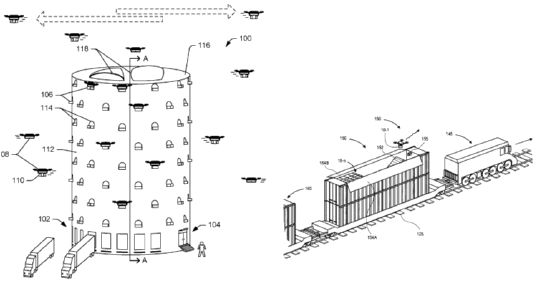
Figure 2: View of multi-level fulfillment center, according to US 2017/0175413 A1 (left), and a mobile intermodal delivery system according to US 9718564 B1 (right)
Augmented reality
Augmented reality relates to systems which enhance information of a real environment by providing a visualisation of integrating computer-generated virtual information with a view of the real environment. This technology has been explored by various companies for many applications.
As an example, an Apple patent (US 9646422 B2) describes augmented reality methods using mobile phones or "smartglasses". If users want to obtain information about things they see, they may capture the view of the real environment with the camera of their mobile phones and receive associated digital content that is related to the location or the object of interest. According to another embodiment, a user may also wear a video-see-through head-mounted display (HMD). The camera of the HMD that captures an image of the real environment may also be used to detect image positions of the user's finger in the image. Thus, a user may simply point at a building to receive information about it, which is then virtually generated on the HMD, as shown in Figure 3.
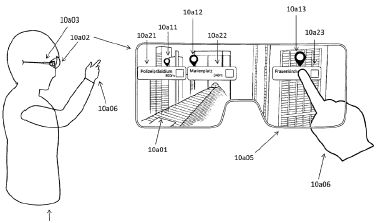
Figure 3: Representation of locations of interest in the view of a real environment on a semi-transparent screen of a HMD, according to US 9646422 B2.
Autonomous driving
Autonomous cars refer to vehicles that are capable of sensing its environment and navigating without any human input. Potential benefits of this technology include a significant reduction in traffic collisions. As an example, Google's patent US 9081385 B1 describes a technique using a camera and a variety of sensors to detect the surroundings of the car. Moreover, this patent discloses a method of receiving an image of a vehicle's road of travel and using pixel information to determine the location of driving lanes on the road. The lane information is then analysed to control the vehicle and ensure it stays within its proper driving lane.
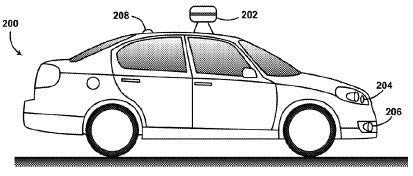

Figure 4: Illustration of an example automobile (top), and an image of a road of travel of an automobile, in accordance to the disclosure of US 9081385 B1
Electric cars
There's a major shift towards green technologies in the automotive industry, driven by regulations and consumer demand, due to the desire to reduce greenhouse gas emissions and concerns about increasing oil prices. Besides extending the reach capabilities, companies are also looking for more comfortable and/or faster ways to recharge the batteries in the electric cars. For example, Toyota's patent application US 2017/0028854 A1 describes wireless charging transmitters embedded along roadways that will incrementally recharge vehicles as they drive over them. A charge receiver is situated at the car's underside to receive an electromagnetic field from an electromagnetic energy source connected to the charge receivers for purposes of charging the battery.

Figure 5: A view of an example of a wireless charging system for a vehicle, according to US 2017/0028854 A1
Internet of Things (IoT) at home
Companies are extensively developing applications for internet connected devices. In particular, retailers have discovered IoT devices to establish new ways of customer service, e.g. offering automated replenishment. Walmart filed patent application US 2017 /0124633 A1 describing IoT tags of products to monitor their usage in the customer's home. The tag determines when a product needs replenishment, upgrades, or replacement and automatically places orders to ensure continued purchases without forcing the consumer to adhere to a pre-set schedule.
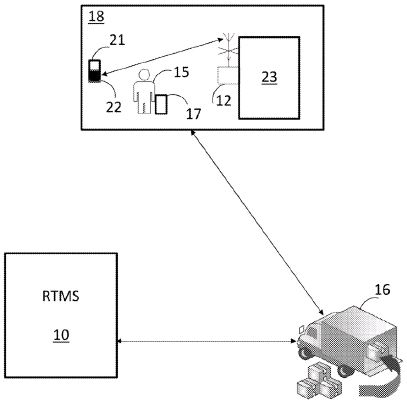
Figure 6: A component model of an environment according to US 2017 /0124633 A1
The content of this article is intended to provide a general guide to the subject matter. Specialist advice should be sought about your specific circumstances.

